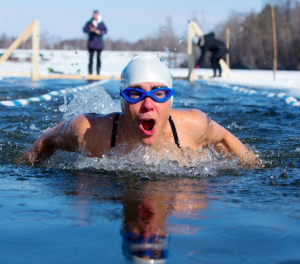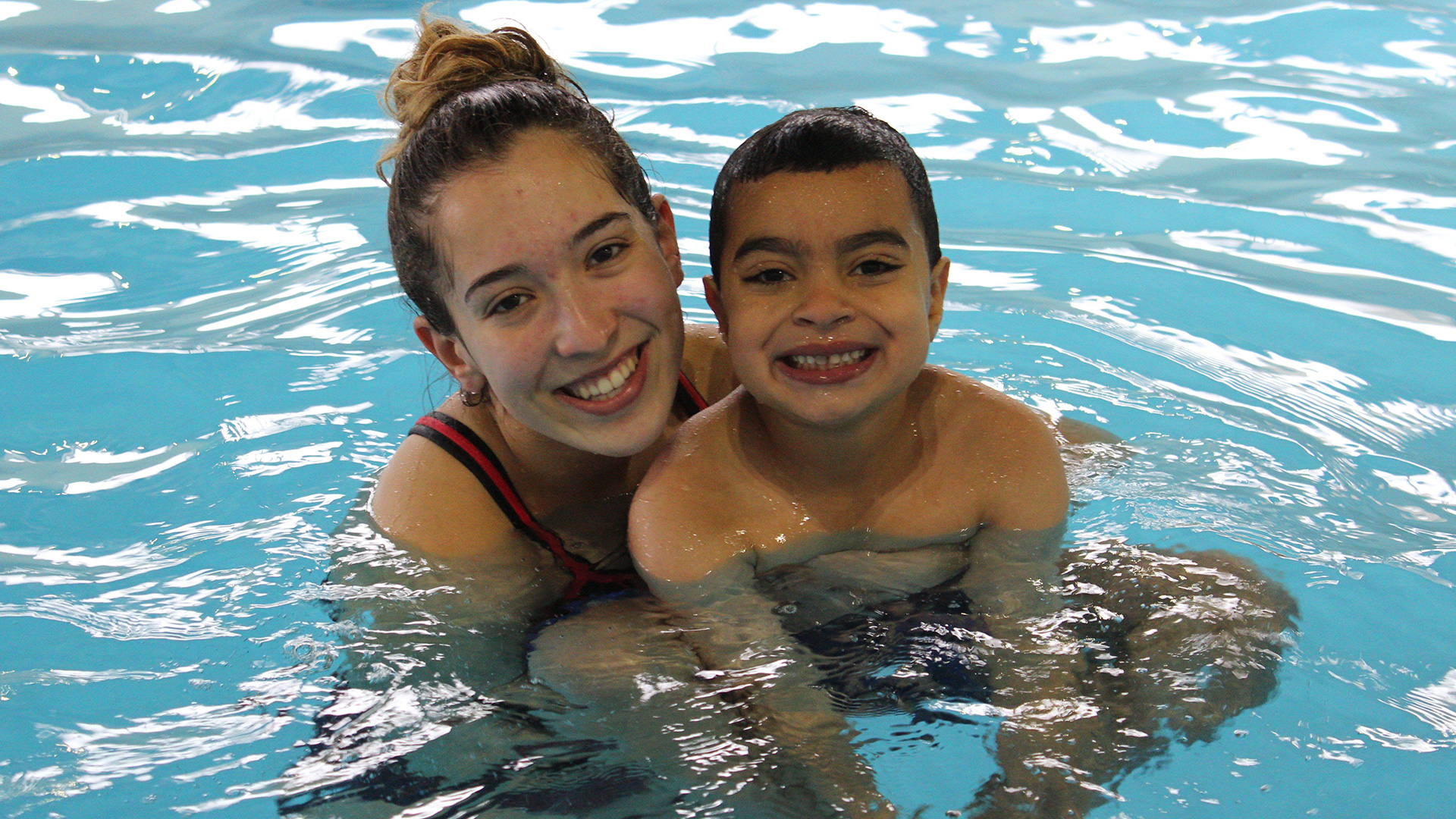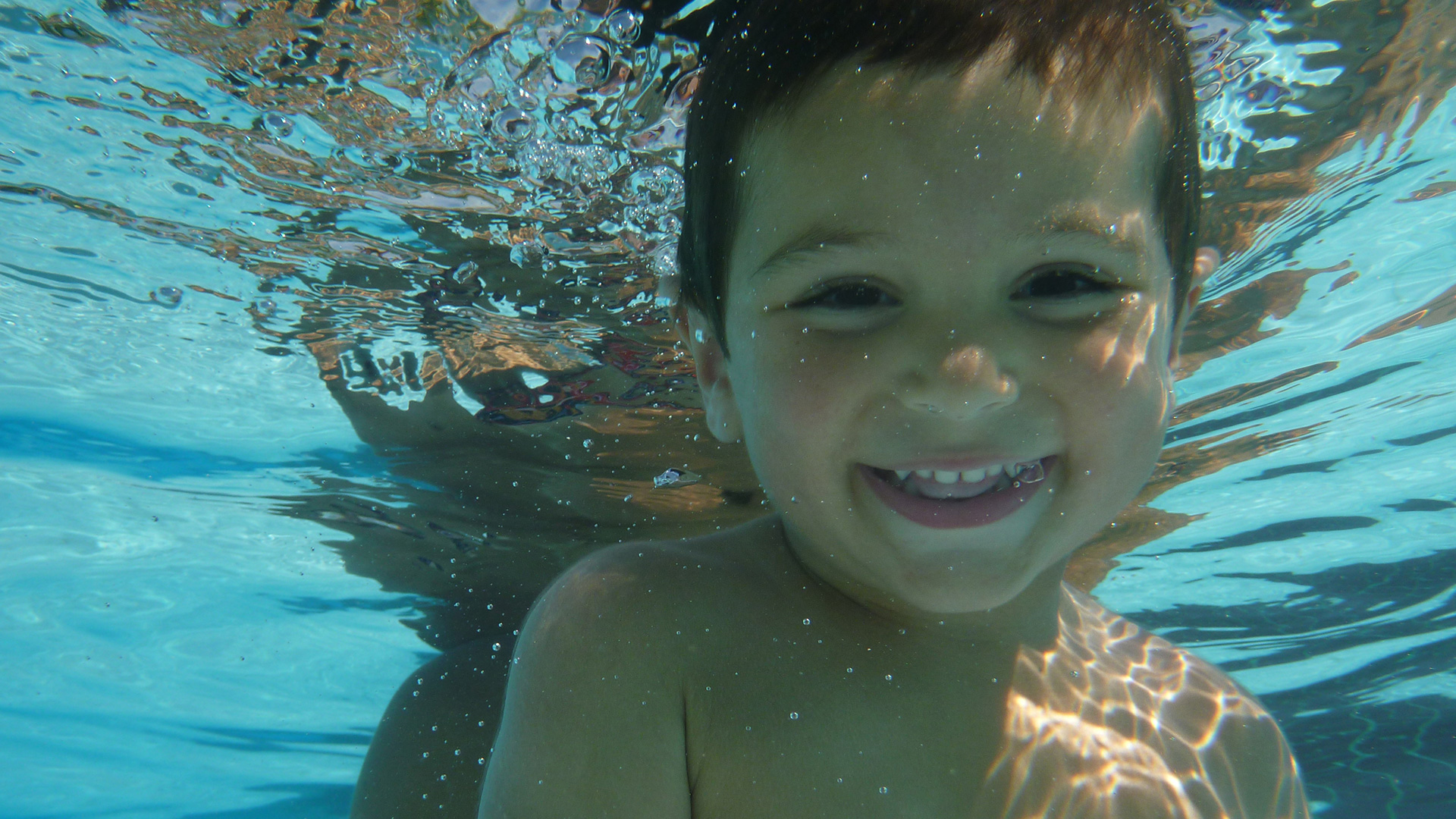We see it all the time. Parents go swimming with their young kids, set them up with a lifejacket-waterwing-bubble-noodle combo, and off they go! You can never be too safe right?
While safety must always come first, especially in backyard pools, it is entirely possible to practice safe yet independent swimming without all the swim aids. Kids who are constantly given swim aids or too much help in the pool may take longer to reach swimming-by-themselves status. While we do want non-swimmers to be as safe as possible, it is equally important to also train our kids to be independent around the pool.
Before I go any further, I would like to remind everyone that no one – especially children – should ever swim alone nor be left unsupervised. In a recent article about letting kids swim alone we discuss that the minimum skills to determine if someone can “swim” are being able to
- swim 100m unassisted
- tread water (keep your head up) for 60 seconds
- fall into deep water and get back to the side
Any child over 12 years old who can perform these skills should theoretically be able to save themselves or survive in any swimming pool situation. Open water is another story and will be the topic of a future article.
So how can parents help non-swimmers reach this threshold?
Go in the water with them. Watching from the side, even with your child all lifejacket’ed up, does not encourage independence the way we might think. As mentioned above it can create dependence and slow the learning process in the long run. Encourage them to swim like you, to do things by themselves, and remain actively involved.
Remove the swim aids. Obviously only when you are in the water with them, but get rid of all the swim aids (including noodles), just use toys. The more our non-swimming children hold onto floaties, the more dependent they become on them. It can get to the point where a child will flat out refuse to get in the water without their jacket/noodle/wings, which takes a lot of undoing.
Get their head wet, right away and all the time. I always giggle inside when I think about people who swim with their head held high, like the water will mess up their hair forever. Fear of putting the face in the water is one of the most common obstacles for kids, and often it is learnt from parents. The moment you get in the water, go under. Make this a routine for your kids. Practice in the bathtub too: we get in and immediately dump water on the head, frequently and in large quantities. Make this the water routine. We get in, we get our head wet, and we play.
Make them do the little things by themselves. It is one thing to help a child around the pool. It is a completely other thing to do every single thing for them, even the obvious things they can do themselves. Want your kid to get out and jump into the water? Don’t lift them out. Make them hold the side of the pool and practice climbing out. Your kid wants a toy? Make them climb along the side of the pool until they can reach it.
Always encourage the basics. Kicking. Paddling. Head in the water. Kicking. Paddling. Head in the water. Encouraging these basic movements helps our kids develop a feel for the water, and learn basic propulsion.
Practice pushing off your legs to get to the side. Learning to swim on their own happens in small steps. How parents can easily encourage this is by getting kids to push off one things (ex: your legs), and grab onto another thing (ex: the wall). they will quickly become comfortably with these short distance jumps. Then slowly increase the distance, while encouraging the basics (above).
Celebrate the little victories. Though a 2m swim may seem easy enough, if this is the first time your kid does it it is a monumental moment in their swim career. Celebrate accordingly so the child in encouraged to do it again and again.
Remember that safety always comes first, use your judgement when applying these tips. These challenges promote the I-can-do-it-myself attitude that kids famously demonstrate all the time, and will lead to more and more independence in the pool. When constantly applied and practiced, kids will learn to swim on their own, faster and more confidently.
Happy swimming everyone!











